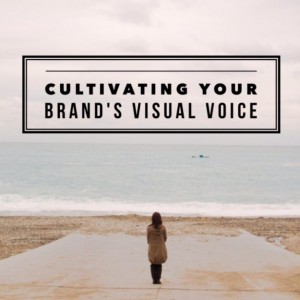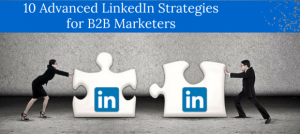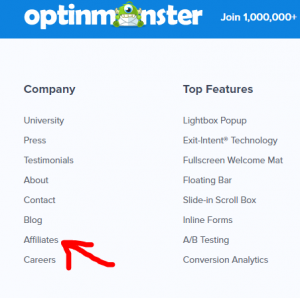
One of the beauties of the Internet is that so much marketing can be accomplished for free. And this has evened out the “playing field” for small and mid-sized businesses who may have to compete with the “big boys” and all of their marketing dollars. From a great website, to an amazing blog, to a presence on several social media channels, businesses have the chance to capture audiences (and their tribes) and grab a good market share.
But all of this free marketing should not make you blind to the benefits of paid advertising, especially when it can be done on a relatively tight budget. Businesses are finding that there is much to be gained (i.e., customers) from the use Google Adwords, and promotional advertising on Facebook and Instagram. Here’s a quick and easy guide to using these three advertising venues.
On any given day, about 1.18 billion users are on Facebook, from every possible demographic. Finding your audience can be a challenge if you are only using your page to drive your targets to your site. A better way is to use targeted ads and send them directly to your demographic.
Facebook collects so much information about users that it has one of the best targeted ad programs. Marketers can specify, age, locale, socio-economic group, education level – just about anything that might be on their profiles. And once you have published your ad, you can track its performance.
You have three options for ad placement – the desktop news feed, the mobile news feed, or the right rail. They can be run on a per-impression or per-click payment basis, and there is plenty of information available during the process to make the right choice. In fact, Facebook will show you your competitors’ bids, so you can make a better choice.
As you create your Facebook ads, remember these important four “rules:”
- It must be visual – it’s more memorable
- It must have direct relevance to your target – choose your demographics carefully and focus on their wants and needs.
- Add a value proposition – what can you offer that your audience will find enticing? A discount? A free trial or gift? Free Shipping?
- It has a clear CTA – tell them what to do and create a sense of urgency if you can.
Take a look at this ad from Nature Box:

This company offers a monthly subscription service for healthy snack items. If it has targeted its audience correctly, this is showing up on one of those three ad options and will probably appeal to those into health, fitness, organic foods, and convenience. The visuals are great; its relevant to a chosen target; it certainly offers a value proposition, and there is a clear call to action. The headline at the bottom is catchy and engaging.
The only other thing that might be included would be some “social proof,” especially if the company has been in business for a while and can provide a large number of happy subscribers.
And here’s another one, targeted for mobile news feeds and to 20-something’s. The New York Times certainly has specified the demographics, and this will only show on their feeds. And it obviously has all of the four “rules” covered.

And the stats aren’t bad – 4.9K likes, 12.Kshares, 590 comments
The great thing about Facebook is it is both powerful and flexible. There are enough options for any budget or time crunches. If you are not yet using Facebook targeted ad campaigns, spend a small amount and do a bit of experimenting.
Google Ads
If potential customers or clients would find you through an organic Google search, then you probably need to consider Google Adwords. The great benefit of PPC marketing, such as that offered by Google, is that you can test keywords/phrases, audience response, location, etc. and determine what is working or not. This will give you a “heads up” on both your competitors and what you should be doing with any SEO campaign. The other great benefit, of course, is increasing conversions and revenues.
The Basics
Google Adwords is what is known as “Paid Search.” In essence, you are going to pay for advertising that will put your ad on a SERP, looking very much like a true search results, even though there is now a small box in the upper left corner signifying that it is an ad rather than an actual result.
Much like Facebook, you bid for the price you will pay (PPC), and your position on the page will be determined in part by that and what your competitors are willing to pay per click for their ads. The other determinant is what is called a Google “Scoring.” This relates to the relevance Google places on your ad, based upon the relevance of your keywords, the number of clicks your ad has previously received, and the quality of your landing page and its relationship to the search. You may be outbid by a competitor but if your “score” is higher, you will be placed above that competitor.
It is a bit more complicated than Facebook in this respect, but you do want a top position. Ads may be placed on the right sides of the search or in boxes at the top of the search results page.
Here are just some of the things you can do with a Google Adwords campaign:
- You can turn ads on and off
- You can select locations for your ads – from local through global
- You can choose keywords and show up almost immediately as soon as they are selected by searchers
- You can choose the devices for your ads
- You can set a daily budget in advance or you can let Google do it automatically for you based upon your spending constraints.
- You can test each campaign/keyword and change as often as you wish
- You can include images in your ads (and you should)
Here are the first page results when the term “dog beds” is entered:

Note the ad content – “low prices,” “free shipping,” “keep them warm and cozy.” “deals on dog beds,” “wave 20%,” etc. each ad opens with a value proposition of some type. The ads on the right rail contain prices. Note that several of them are from the same advertising who “ranks” first on the ads as well. This company has offered several options for visitors to “click” through.
Developing Google ads takes time and lots of creativity. And a lot of testing and analytics is involved. A successful campaign means continued vigilance, checking your analytics and checking up on your competitors and what they are doing. Add to this the fact that Adwords frequently adds new features which you will need to stay on top of. Google does offer some help too. Still, managing an Adwords campaign takes time and dedication on your part.
Facebook bought Instagram in April, 2012. Some said the price was too high but they are probably “eating those words” now. Instagram is hot, because it relies on connecting with followers through photos (and now videos) – people love visuals far more than just text. Today, there are over 700 million active users of Instagram.
And here’s the thing about advertising on Instagram – it is integrated with Facebook. The other beautiful thing about placing ads on Instagram is that they feel totally “native.” They look just like a regular post. Here is an example of an ad placed by Jasper’s Market.

It has all of the important elements of a great ad – an amazing picture, a value proposition (getting delicious recipes free), and a CTA button (Learn More) that will take a follower straight to the website. the only indication that this is an an ad is the word, “Sponsored” in the top right corner.
Another huge benefit of using Instagram is that, according to the research, Instagram photos are resulting in about 58% higher user engagement than posts on Facebook or Tweets. So why not be advertising to an audience that is more engaged?
If you intend to use and Instagram marketing campaign, be certain you do the following:
- Identify your audience. Because Instagram is integrated with Facebook, you can use Facebook’s targeting mechanism.
- You can use re-targeting – display your Instagram ads to those who have visited your website.
- When you create your ad, don’t make it look like one. Make it look like a regular Instagram post. You do this by carefully choosing the image and crafting the caption.
- Use video – it’s becoming increasingly popular with audiences.
- Use pictures and videos from your customers – brand ambassadors can’t be beat.
Understand that running one amazing ad on Instagram will not result in an immediate spike in purchases. It is a process. You have to use Instagram regularly to build those relationships. Be patient.
The other important thing is to do some split-testing for engagement. Use the same picture and change out the caption, or vice versa. Test to see which is engaging more.
A Final Thought
One of the reasons television ads dominated marketing for so many years is clear – that is where the consumers were. Now the consumers are no longer there – they are on social media. Using the advertising opportunities on major social media channels just makes sense. And, when compared with the cost of TV advertising, there is just no comparison.
Digital & Social Articles on Business 2 Community(97)








